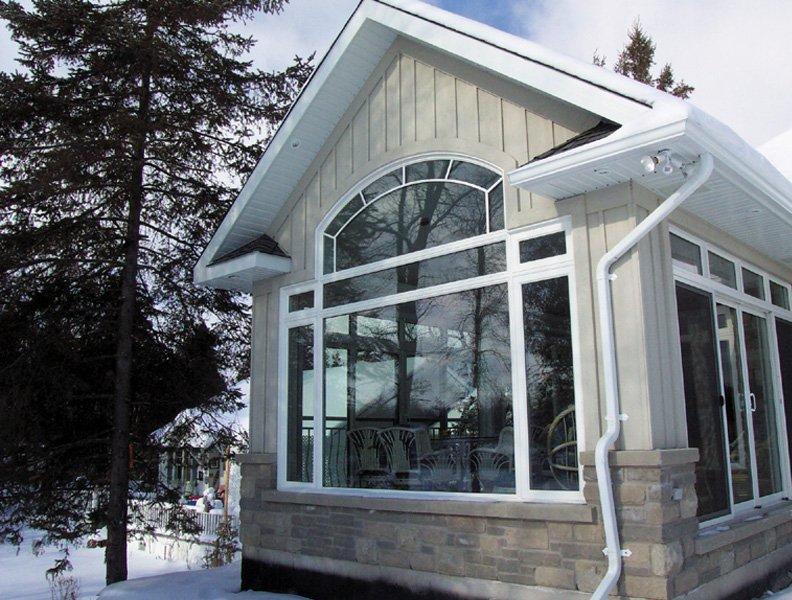As the temperature outside plummets and the weather becomes more severe, windows begin to play a more crucial role in protecting your house from the elements.
The protection and comfort of energy-efficient windows is one of the biggest factors in deciding to undertake a replacement.
When it comes to temperature and climate control, Canadians spend roughly 90% of their annual energy costs on heating and only 10% on cooling their house.
Naturally, windows manufactured for our market reflect these needs and address more of the concerns associated with keeping the heat in the house, and bring down the costs associated with energy consumption.
Knowing how your windows will overcome the extreme cold is an important factor in deciding what type of windows to get, and subsequently how much you should be spending on them.
The modern window technology uses energy from the sun to heat your room all year round, even in harsher northern climates.
The ratings known as Solar Heat Gain Coefficient (SHGC) are a key factor, in combination with a window’s U-Value (thermal heat loss), when it comes to determining a window’s performance rating (ER).
SHGC is important to consider in conjunction with the location of the windows in the house. When a room is located on a south and/or west exposure, it experiences the most solar gain. Recent research demonstrates that windows with medium-high SHGC placed in these exposures actually cause more warmth heat discomfort. For these rooms, it is better to emphasize a low U-Value (High R-Value) rather than heat gain.
Customizing your window order to suit the needs of specific rooms will help you maintain the overall comfort of your home while reducing your heating bills.
Another side-effect of extreme weather is condensation. We have written about it in our previous posts, so it’s enough to say here that, yes, it does happen on new windows. No, that does not mean your windows are broken or faulty. In fact, there are cases when new windows initially have more condensation than the old ones that got taken out. How does this make sense? Because they offer a better barrier between two varying temperatures, higher differences in outside and surface temperature of the unit, are likely to cause more condensation. Clients will commonly notice condensation decrease as time goes by and the window “adjusts” to the house.
In areas of the house that naturally have more moisture in the air (bathroom, kitchen) it is not uncommon to see water freezing on windows. While this also sometimes happens on room windows, this may be a significant concern, as it sometimes can be an indicator of sealed unit failure.
Sealed-unit failure can occur as the frame contracts from the effects of cold temperature. This is an issue that is usually preventable if the installation is performed correctly and the frame is shimmed and foamed properly. This ensures the structural stress is spread evenly and the weight of the unit is distributed around the frame evenly.
If the unit is sealed correctly, condensation on the glazing should be even. If you notice condensation around the edges of the glazing, but not toward the middle, the unit may not be fully filled with gas.
As with most things involved in the replacement process, proper research and planning are crucial in making sure you get the right windows. Knowing how SHGC can influence the comfort in a room, proper installation, and the quality of the windows themselves, are all important factors in ensuring they are working for you during the colder months, while reducing the amount of money you spend on heating.
Check out these window replacement articles:
How To Compare Replacement Windows
Find Out The Cost of Replacement Windows
One Thing You MUST Know Before Scheduling A Window Replacement Quote
